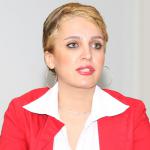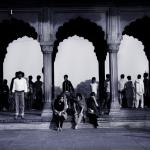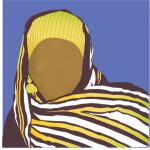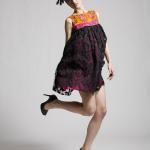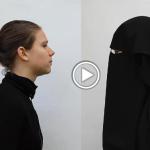Nikoo Tarkani's graphic performance piece makes emotional pain physical, and addresses the limitations and stereotypes society can place on Muslim women.
Pain is certainly a strong image in performance art. To visualize pain you have to feel it and thus make your audience feel it like you do. No image is stronger than the image of a person getting hurt; sometimes when reaching a mental dialogue with your audience you have to sacrifice something to make them feel what you feel. I believe that is why performance art and pain are in such close contact. There are so many disturbing images and memories in any human’s life.
As an Iranian woman I have always faced certain limitations. What society wanted me to be was not the real me. First, I thought men were to blame for oppressing women; but I have come to realize it wasn’t only my male compatriots. Of course, the patriarchal society in which I am living is somewhat responsible. But the question is, who made this society—only men? The answer is doubtlessly no! We women—mothers, sisters, and daughters—play a certain role in society; and who could keep us quiet if we wanted to talk? It was me—as a representative for women—who has to deal with all the problems. There has always been a real “I” and an “I” which society has attached to me. But this other “I” was also created by me in a way: by my silence, passivity, and acceptance of my predetermined role. I was suffering for this other “I”; and at the same time it was inseparable from me.
I thought the pain of sewing something onto my forearm best represents my suffering. But it is my own hand that is sewing the word on my own arm—it was me who let this pain grow in me, and worse, it was me who did it. The word I sew on my forearm is Persian for “I.” In this video, I’m using myself as a representative for all women in my patriarchal society. Sewing on my forearm is a metaphor for suffering from an “I” that is going to be attached to me. This “I” slowly takes form as I grow up, and that is why the video is so slow: to show my suffering during a lifetime, and to represent the duration in which this other “I” is being created.
I believe that this other “I” exists in any human being’s life. The important thing is that in spite of the fact that this other “I” is being shaped by society, ethnicity, religion, culture and many other familial, economic, and political variables, it cannot be removed. It has marked us forever. If we try to tear up the strings we would see the scars, and there is no beauty in a scar; there it stands as a reminiscent of our pain, suffering, and the life we had. Turning an emotional scar into a physical one in performance art is not intended to be sadomasochistic, but is meant to visualize the pain and activate empathy in the audience. Maybe, and only maybe, by evoking the same feeling in the others and letting them remember what they –just like me—have been through; we could shake off the numbness and passivity that enfolds the women in our community.
